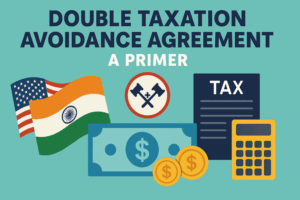
What Is GIFT Nifty, and Why Should You Care?
Imagine being able to invest in India’s top companies—like Reliance, Infosys, or HDFC Bank—without needing to navigate India’s domestic market rules or currency. That’s exactly what GIFT Nifty allows global investors to do.
It’s a futures contract tied to the Nifty 50 (India’s main stock index), but traded on a special exchange in Gujarat called the NSE International Exchange (NSE IX). What makes it unique? It’s dollar-based, tax-efficient, and designed with international investors in mind.
The Backstory: From SGX Nifty to GIFT Nifty
Until recently, if you were outside India and wanted to trade Indian stocks, you probably used SGX Nifty on the Singapore Exchange. That changed in July 2023, when India launched GIFT Nifty and brought that trading home.
The move wasn’t just about convenience—it was strategic. India wanted to keep the trading volume, data, and revenue that were previously flowing to Singapore. It also helped boost GIFT City’s profile as a rising global financial center.
Why Investors Are Paying Attention
Here’s why GIFT Nifty is turning heads in financial circles:
⏰ Longer Trading Hours
GIFT Nifty runs for nearly 21 hours a day—covering markets in Asia, Europe, and the U.S. That means you can trade Indian stocks almost anytime, from anywhere.
💸 Tax Benefits
Trading in GIFT Nifty comes with some major perks—no capital gains tax, no securities transaction tax, and other exemptions that make a real difference for your bottom line.
🌍 Global Access, Local Control
You get the flexibility of an international market, but it’s still regulated by Indian authorities. It’s the best of both worlds—global reach with strong oversight.
Who Can Use It?
Right now, GIFT Nifty is mainly for institutional players—foreign investors, NRIs, and firms with a presence in GIFT City. Indian retail investors can’t access it directly yet because of RBI’s rules on sending money abroad.
Still, many Indian traders watch GIFT Nifty closely. Its price moves before the Indian markets open, so it’s a useful signal for what might happen on the NSE when the bell rings.
Beyond the Basics: Sector-Specific Trading
GIFT Nifty isn’t just one product. You can also trade futures tied to specific sectors like banking, IT, and financial services. That lets global investors make more targeted bets—whether they’re bullish on Indian tech or want to hedge against volatility in the banking sector.
What This Means for India—and You
GIFT Nifty is more than a new trading option. It’s a big part of India’s long-term plan to become a global financial heavyweight. By creating a smart, investor-friendly environment in GIFT City, India is telling the world: we’re open for business.
If you’re an investor looking for exposure to one of the fastest-growing economies in the world, GIFT Nifty is a smart way in.
Conclusion
GIFT Nifty is India’s way of taking control of its financial future while making it easier for the world to invest. It’s bold, smart, and already making waves. Whether you’re a global investor or just watching from the sidelines, this is one development worth keeping an eye on.
FAQs
Can individuals in India trade GIFT Nifty?
Not directly—only institutional players or firms based in GIFT City can trade for now.
Where can I see GIFT Nifty prices?
Sites like TradingView offer live prices, charts, and analysis tools.
Is GIFT Nifty risky?
Like all futures, it involves risk—especially with 21-hour trading and global market influence. But it also offers tools for hedging and managing that risk.







